Climate: WFP at hand in South Sudan as floods threaten lives and livelihoods
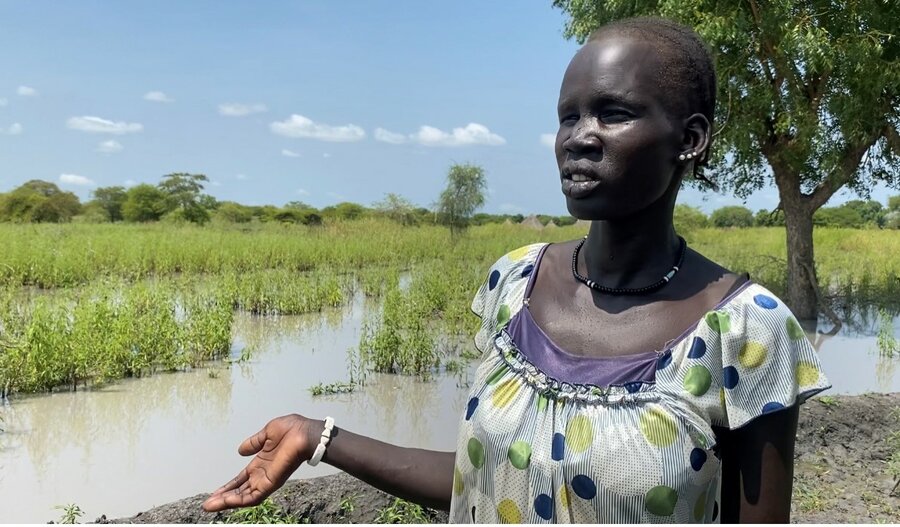
Gunshots past midnight startle Nyaloka Puok wide awake. Confused, she wonders if fighting is breaking out in her village of Paguir, but another fear grips her as she remembers her community had agreed to use gunfire as a warning: the waters are coming.
The 37-year-old single mother of four rolls off the cot onto the ground and scrambles out of her hut. The dyke has burst again.
“I could see the water rising with my own eyes,” says Puok, recalling that year when massive floods washed away her precious crops, forcing her and her children to live on wild fruit and water lily bulbs, foraged to supplement diets, but not sufficient to replace them.
Two years later, the floodwaters are yet to recede, making cultivation impossible. “Under this water is my land,” says Puok, pointing to where sorghum once grew. “Hunger has been with us for two years and my children and I always sleep hungry.”
4 ways the World Food Programme helps people adapt to climate change
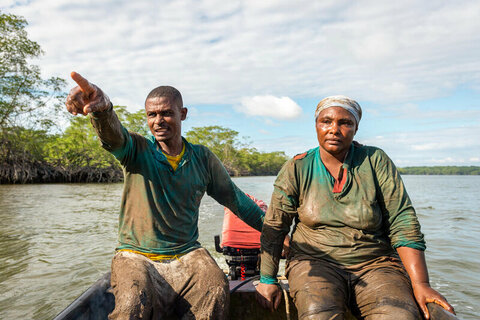
Harvests lost in the past three years since massive floods swept across South Sudan – affecting 49 counties in 8 states – would have fed people in local areas for up to eight months, but all the crops were destroyed. Initial studies from the UN Food and Agriculture Organization suggest that about 65,000 hectares of cultivated land have been damaged due to floods, while 800,000 farm animals have died.
The World Food Programme (WFP) forecasts a rise in food insecurity this year as subsistence farmers – like Puok – have no way of sustaining their families.
In 2020, 30 million people globally were internally displaced due to weather-related events, primarily storms and floods.
Humanitarian resources have been stretched thin to cover mounting needs with more than 70 percent of the population expected to suffer from severe food insecurity at the peak of the lean season of May to July.
“WFP and the rest of the humanitarian community simply do not have the resources to deal with the extent of the crisis in South Sudan in 2022,“ says Matthew Hollingworth, WFP's Representative and Country Director in South Sudan.
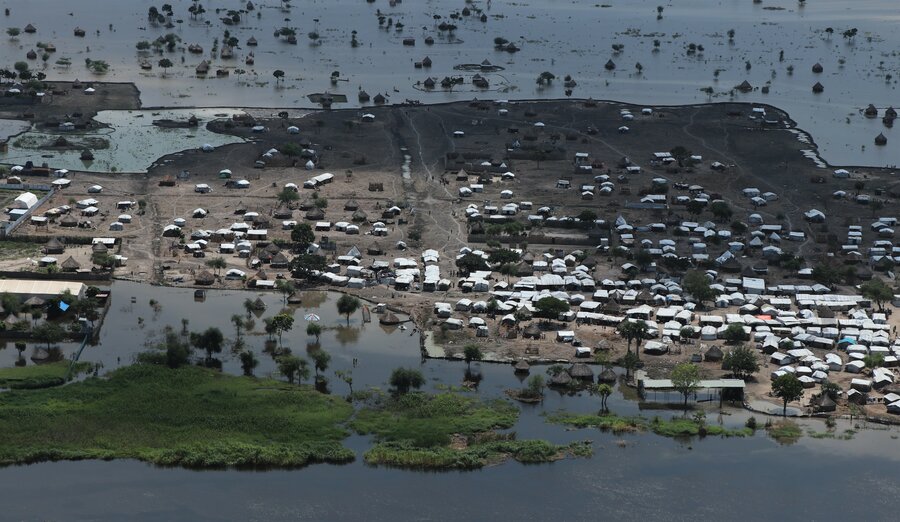
“The climate crisis in South Sudan is compounding the dire conditions in which many poor communities live. Lives will be lost if aid organizations are unable to offer sustained support. A narrow window opportunity is getting smaller by the day. Now is the time to act.”
Much of South Sudan is now under water. Experts say it is unclear when the water in the flood zones is likely to recede or whether it can evaporate fast enough before the rain season begins in April, meaning more danger may be ahead for millions of people.
The states of Jonglei and Unity are the worst affected, with floodwaters turning entire regions into a kind of water world with no dry land in sight. We sailed for two hours on what used to be a roadway, now completely under water. Arriving on the edge of Paguir, we wade through waist-high murky floodwaters to reach Puok’s homestead.
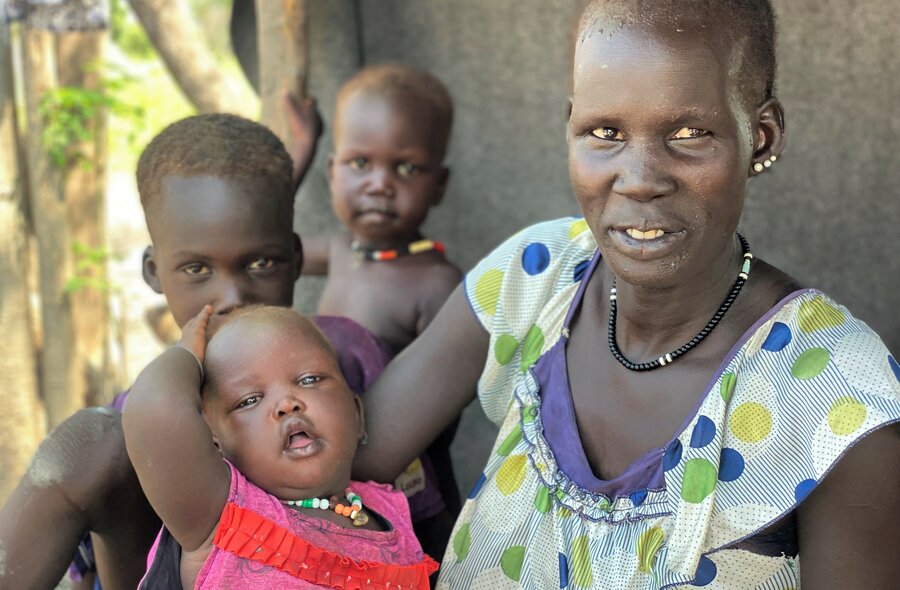
Many people have fled Paguir but Puok refuses to leave, despite feeling that her life is wasting away. There is one thing that she is desperately trying to protect: her mango tree.
“I planted this tree many years ago,” she says. “It survived these floods and the danger we have experienced – it is my miracle tree.”
Many trees in South Sudan’s flooded regions have died, the result of consecutive inundations that have kept forest floors waterlogged and boggy three years in a row.
Puok’s story is one of millions in South Sudan, home to the largest wetlands in Africa. The shape of those wetlands is changing dramatically, leading to less and less dry arable land while more and more people resettle in drier locations where other communities already live.
Roughly the size of Texas, South Sudan is a landlocked country of only 12 million people, most of whom live in settlements, typically built between a body of water on one side – such as a riverbank or swamp – and a dirt road on the other.
Tensions arising from limited access to resources often lead to conflict as internally displaced South Sudanese, including rival pastoral groups, move in and out of communities, vying over arable land and more habitable grounds.
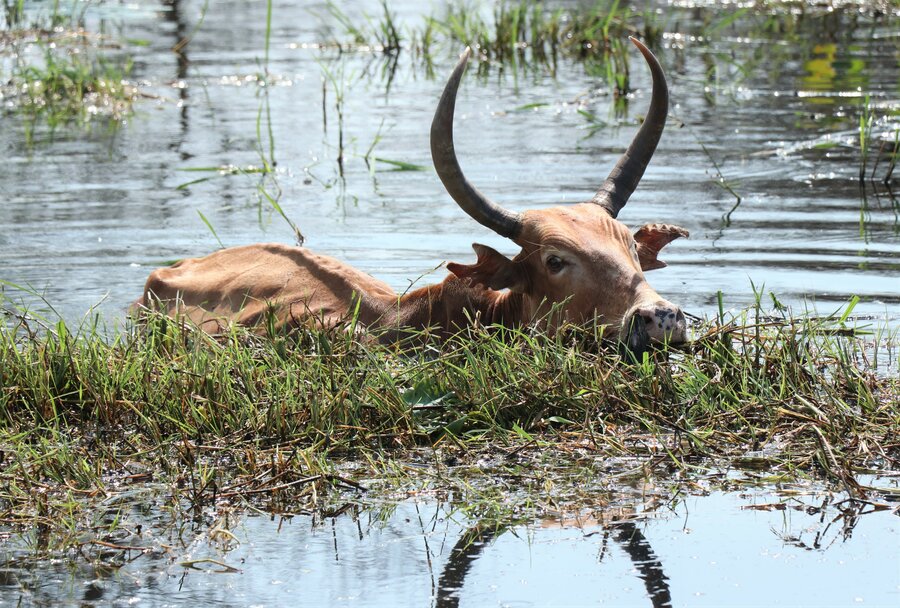
Back in Paguir, Puok built a dyke out of stacked mud to keep the water encroaching on her homestead at bay.
But she lies awake at night listening intently in case there is a breach – the porous material makes for an unreliable barrier.
“Water slowly creeps closer, so it is hard to stop monitoring,” she says. If the dyke bursts, the it could flow into the hut and drown her and her children in their sleep, she fears.
“We are tired and suffering. This water is too much,” says Puok. “We tried our best, but the water is defeating us. These floods came two years ago and since then we have been living in water.”
While tremendous challenges lie ahead as vast swathes of land remain waterlogged and hundreds of thousands of people remain displaced, WFP is working with flood-affected communities where it is feasible to build protective dykes around inhabited areas at risk of flooding.
In Aweil South, for instance, WFP worked with families in Warcuum village to build a dyke that has prevented the community’s displacement and helped them return a degree of normalcy to their lives.
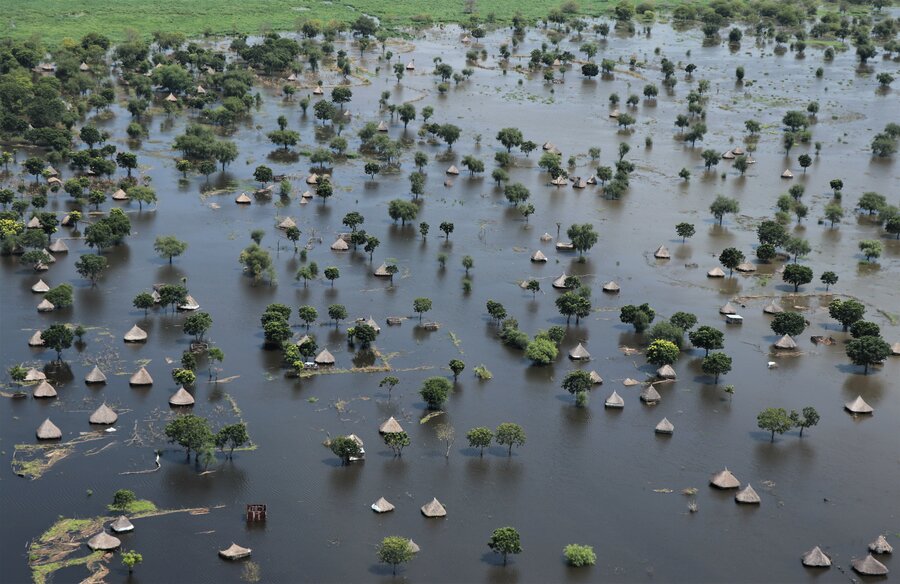
In Unity state, the second hardest hit area by floods after Jonglei, WFP is salvaging access routes and roads destroyed by three years of floods. It is working with partners to keep road and river access routes open to support food deliveries as well as building dykes along 18 km of flooded road to enable the movement of communities, enliven trade and bring life back to Unity.
South Sudan is among the most rapidly warming locations on earth, with temperatures increasing as much as 0.53°C per decade - two and a half times greater than the global average. With nearly 87 percent of the South Sudanese population depending on agriculture, livestock, and forestry for survival, climate change threatens the very existence of the people’s way of life and their ability to build their resilience.
Sahel: Millions at risk with hunger and displacement on the rise, warns WFP
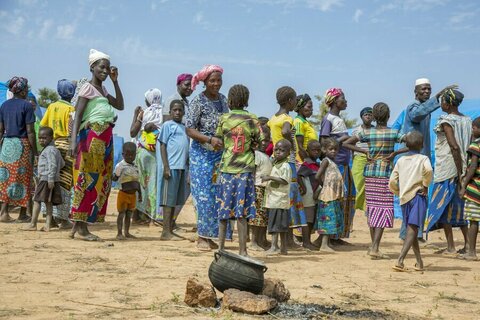
In South Sudan and other developing nations besieged by the devastating impact of global warming, climate change is clearly moving faster than the finances globally allotted to deal with it.
It is no longer enough for advanced nations to focus on mitigating the climate crisis through curbing fossil fuels emissions and transforming food systems. Without the ability to adapt to their new climatic stresses, Puok and countless others already living on the frontlines of the climate crisis will have no choice but to migrate to where they can survive.
Marooned on her small island, Puok wades through waist-high murky floodwaters to reach her mango tree. Hungry cows grazing the floodwaters for food try to eat the tree leaves, only to be shooed away by Puok’s splashing. She stands guard over her last remaining possession.
A version of this story has been published in Newsweek
Help WFP save lives and change lives in South Sudan
